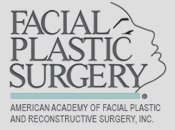Posted January 06, 2016 in Beauty, Blog, Plastic Surgery in the News, Uncategorized
“Beautiful young people are accidents of nature, but beautiful old people are works of art. ”
― Eleanor Roosevelt
From the title, I bet that you are expecting to hear about the latest, greatest techniques, products, devices, and surgeries that will be at the forefront of aesthetic medicine in 2016 and the coming years ahead. Actually, one of the greatest advances in facial plastic surgery is our realization of how important our mind is in determining how attractive we are.
In spinning class yesterday our twenty-something instructor was sharing how happy the class looked and yelled out, “Look young!” What she really was inferring was “Feel young, and you will look young!” Looking young in of itself does not lead to happiness. There are many unhappy young looking people. Feeling attractive and young does lead to happiness. The difference between looking and feeling young is similar to the difference between beauty and attractiveness. Beauty does not necessarily lead to happiness (we all know many unhappy beautiful people), yet when one feels attractive, one is generally happy. No matter what your age, when you feel attractive, you also feel young; you are happier, more confident, and have greater self-esteem. The same can be said for beauty and attractiveness. When we feel attractive we have greater self-esteem, feel confident, and are generally happier, all of which leads us to feel more beautiful.
Spending most of my time helping my patients appear younger by using Botox, fillers, devices, and surgery, it struck me that we can “look young” both with and without these tricks of the trade.
My goal in aesthetics is to help people feel attractive. Attractive people are happy people. Our mood is affected by our facial expressions. Smile and you are immediately more attractive; frown and you are less attractive, less desirable. Our subconscious brain can sense the expression on our face at all times. Smile and the world smiles with you, frown and you not only look unattractive, but the people you interact with reflect that unhappiness back upon you.
Smiling sets off a positive cascade of reactions both from others and within us. Recent studies have proven that expressions on our face directly affect our feelings and mood. These studies show that botox is as effective at treating depressed mood as taking daily anti-depressants. Unhappy facial expressions are related to depression. Depression has been shown to improve by changing the expression of the face from a grimace or frown to a smile. Botox, fillers, surgery, make-up, and nutraceuticals have also been shown to improve mood. Positive facial expressions are correlated with a better quality of life and even with better marriages. By increasing self-esteem and confidence people feel happier.
As Billy Crystal said, “When you look marvelous, you feel marvelous.” What we now realize is that we can influence how good we look by how we feel inside, and vice versa. Our goal in facial plastic surgery is to help our patients feel good about themselves by being more attractive; improving their natural beauty is a by-product and icing on the cake! Smile, be well!




